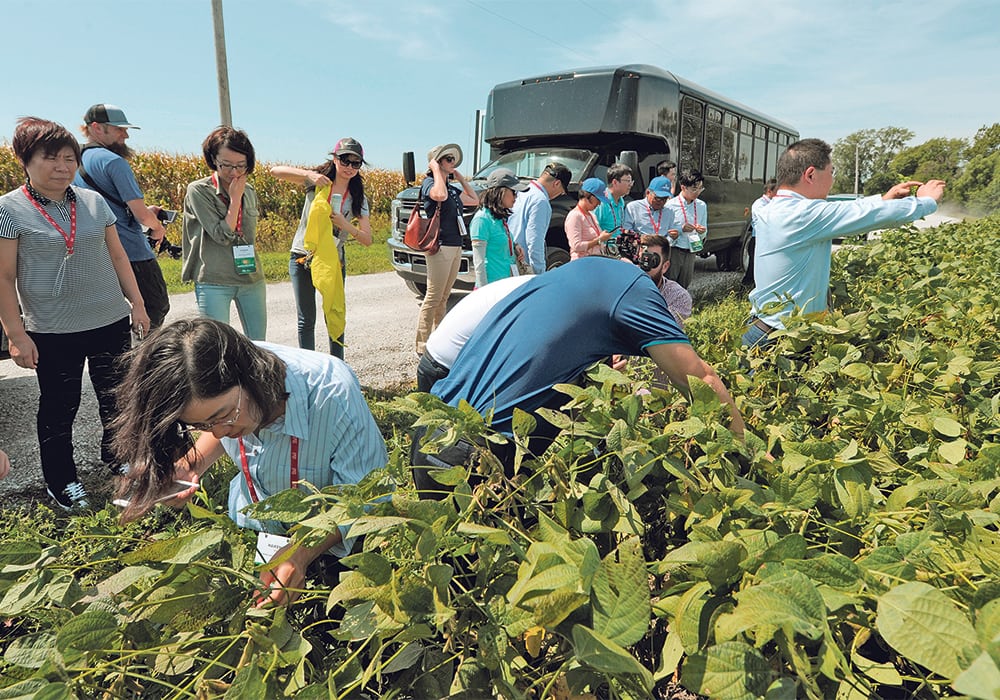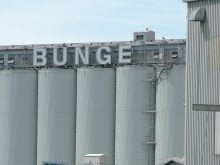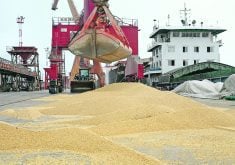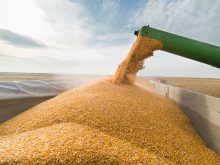A price rally is expected after the China-U.S. trade war is resolved, but African swine fever could slash need for hog feed
Soybean prices could rally as much as $1.50 per bushel once China and the United States sort out their trade spat, but the rally will be short-lived, says an analyst.
Soybean prices are mired near 10-year lows despite record U.S. summer crush and export programs because China has stopped buying U.S. product as a tariff war between the two countries continues to escalate.
At some point, the two world superpowers will work out their differences, and when that happens Chinese buyers will be salivating to get their hands on cheap U.S. soybeans.
Read Also

Flax sector sees omega-3 opportunity
SASKATOON — A global shortage of omega-3 oils could be an opportunity for the flax sector, says an industry official….
Arlan Suderman, chief commodities economist for INTL FCStone, said that sudden surge in demand will lead to a market rally in the range of 50 cents to $1.50 per bushel.
He doesn’t anticipate any resolution to the trade spat before the Nov. 6 U.S. midterm elections, but there could be some easing of trade tensions or even a deal after that.
Suderman expects farmers will be eager to sell into a price rally because they know it won’t last long.
He thinks soybeans will struggle to achieve double-digit prices because farmers in the U.S. are expected to harvest a record 125 million tonne crop.
It doesn’t help that South America’s crop will soon be going in the ground and growing conditions are forecast to be favourable.
However, the biggest bearish factor that could keep a lid on soybean and other oilseed prices is the outbreak of African swine fever in China.
The deadly disease has been detected in 18 farms and abattoirs in six Chinese provinces located more than 1,000 kilometres apart, according to the United Nations’ Food and Agriculture Organization.
There is no vaccine or cure for the disease. The only way it is controlled is by culling herds. To date nearly 40,000 infected animals have been culled.
“Unfortunately, what we’re seeing so far is just the tip of the iceberg,” Juan Lubroth, FAO’s chief veterinary officer, said in a news release.
The FAO is not taking the outbreak lightly.
“This virus is a threat to livelihoods, to economies, to an entire industry and its associated value chains,” Kundhavi Kadiresan, FAO’s assistant director-general, said in the same release.
One of those associated value chains is the soybean industry. China is home to 55 percent of the world’s hogs. It imports massive amounts of soybeans to feed the animals, accounting for 62 percent of world trade in the commodity.
So any large-scale downsizing of China’s hog herd could have a ripple effect through the entire oilseed sector.
“I think this will become the biggest story of 2019,” said Suderman.
“It has the potential to dynamically change the protein complex in China.”
Another story to keep an eye on in 2019 is the financial crisis in Argentina. A plunging peso and sky-high interest rates have placed the country on the verge of economic collapse.
It doesn’t help that a once-in-100-year drought recently slashed crop production and government tax revenues.
Suderman said the country was on the way to achieving some of its jaw-dropping agricultural potential under President Mauricio Macri’s free market reforms.
But now the government has been forced to reinstate export taxes on wheat and corn and to increase export taxes on soybeans, soybean meal and soybean oil.
“What this does is it effectively starts moving Argentina back to where it was pre-Macri,” he said.
Suderman said farmers will likely meet export targets for wheat and corn but he believes they will be holding onto their more valuable soybeans, which are a hedge against currency depreciation because they are priced in U.S. dollars.
That could be a bullish factor for U.S. and Brazilian soybeans and for other oilseed prices but it won’t help Argentina’s economy.
“It is certainly a step back for Argentina in its attempts to emerge as a major player in global agricultural trade,” said Suderman.
















